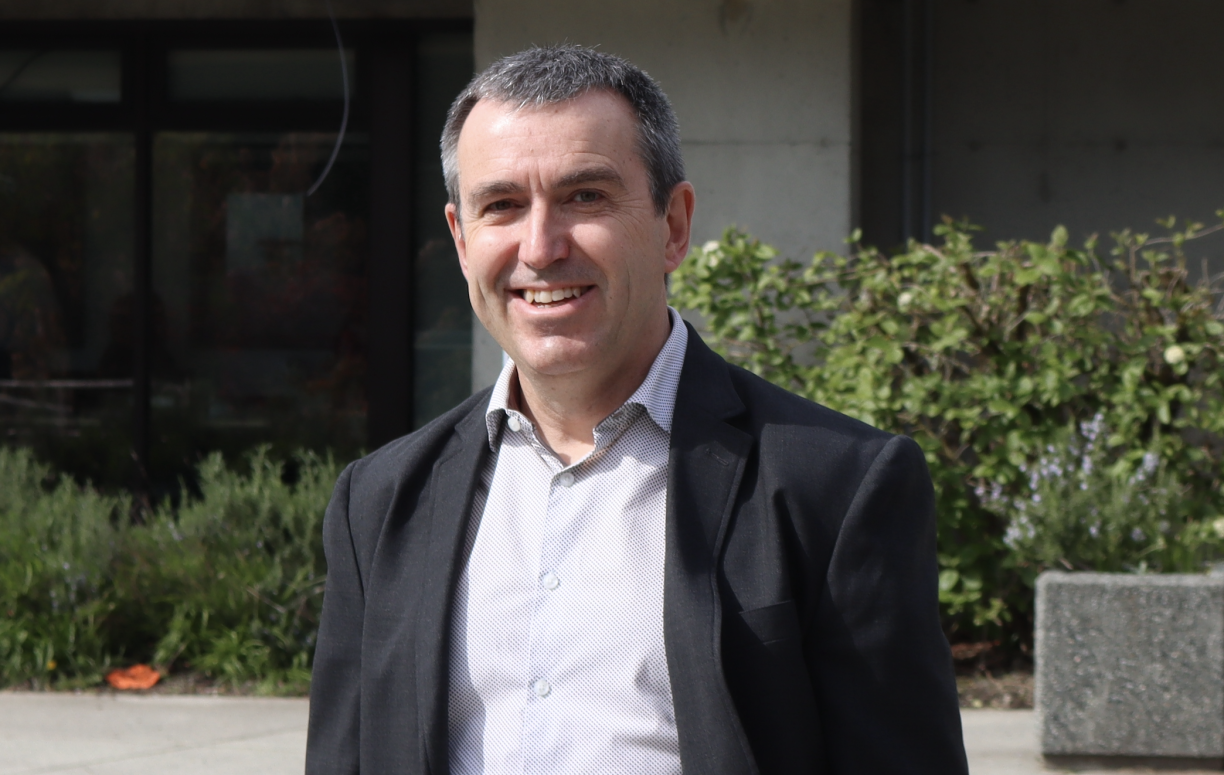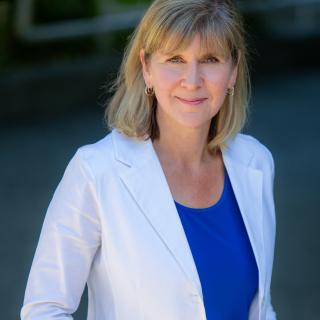VIU Accounting Professor Chris Burnley has written and published a new textbook.
Photo: Vancouver Island University
VIU Accounting Professor Chris Burnley says there’s a certain perspective that comes from “teaching hundreds of accounting classes and seminars.”
And it’s this perspective that has helped Burnley, who has taught at VIU for 22 years, author and publish a third accounting textbook. His first two books, Understanding Financial Accounting, and Financial Accounting: Tools for Business Decision-Making, are in use at more than 60 post-secondary institutions across Canada.
Burnley says the new textbook includes a series of new climate change impact features – “a first for a Canadian introductory accounting text.”
We caught up with Chris to find out more about his latest work, and what prompted him to write this latest edition.
Tell us a little bit about this third edition of Understanding Financial Accounting?
The initial inspiration for the text was a desire to be able to teach with a book that provided a better understanding of the context for the material they were learning in their introductory financial accounting course. The book was published in December 2021 and is structured around a series of core questions as opposed to broader learning objectives typical of textbooks. The aim of these questions is to provide students with better context for the content that follows, helping to make it more relevant to them. It reflects the way that I have taught the material during my time at VIU.
In terms of the need for this third edition, accounting standards are always being revised and the financial reporting landscape is also always evolving. For example, the importance of sustainability reporting, the financial statement impacts of climate change and the use of data analytics have all changed significantly in the time between the second edition – published in 2017 – and the third. The book includes more than 100 examples from Canadian public companies and these need to be revised to remain current and relevant.
How does this book differ from previous editions?
The biggest changes would be the emphasis on sustainability and data analytics. The book includes a series of new climate change impact features – the first in any Canadian introductory accounting text. These provide an opportunity for students to connect climate change with the financial reporting they are learning about in the introductory accounting courses. The book also reflects changes that are taking place in the business world, including buy now-pay later, share buybacks, the increased significance of biological and intangible assets and so forth. Of course, a substantial amount of new problem material was added, which is critical for both students and faculty.
Your two previous books are currently being used at more than 60 post-secondary institutions across Canada. What does having this sort of impact mean to you?
The books have really opened up a bigger world for me and I’m grateful for that. They allow me to be able to play a small part in the education of tens of thousands of students each year, far beyond the reach I would normally have in my role at VIU. It is a real privilege to be able to do this. I also really value the opportunity to connect with fellow faculty across the country who are using the books with their classes. The accounting education community is fairly small and I continue to learn from our discussions, and this input helps me shape the books.
What are some key lessons you’ve learned writing this book?
There’s been a lot of learning, much of it through trial and error. I know that the authoring has made me a better instructor. One of the key lessons has been to talk to other authors – I’ve learned so much from doing this. One of the best pieces of advice I received was that “you only get one opportunity to write a first edition, so stay true to your vision.” Write your book. The tendency in subsequent revisions is to dilute this vision. Be alert to this. Another key lesson is that writing a textbook is really a marathon; write every day in two-to-three-hour blocks if possible, to maintain momentum. Like anything in life, surrounding yourself with smart, caring people is also key.
What’s next for you? Any plans for future editions?
I’m currently working on the next edition of the book that I co-author with Wayne Irvine (University of Calgary) and Barbara Trenholm (University of New Brunswick). We’ve been working on this since late last year and it is scheduled to be published in the late fall. I’m very excited about this edition, as it will feature Indigenous perspectives throughout the book. We have been working with VIU Cowichan’s Indigenous Education Navigator Tasha Brooks and VIU Elder Randy Fred. It is a much-needed first step and I’m hopeful that they will help the students and faculty that use the book and that they will spark meaningful discussions. It’s been a real learning process for me, and I’m grateful to Uncle Randy, Tasha and the Indigenous Leaders who have spent time chatting with me about this initiative. Their encouragement and support helped me take the first step on this important journey.


